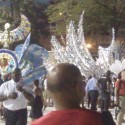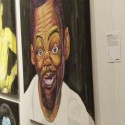Does the diaspora open the door to African identity?
THE STUDY OF Africa within African studies and that of African diaspora studies have traditionally been taken to be distinctive fields. As a rule, when people speak of the African diaspora, they refer predominantly to the former slave diasporas in North America, Brazil and the Caribbean.
In this view, the African diaspora is one of the classic diasporas and is comparable to that of the Jewish, the Greek and the Armenian traditions.
Studies of diaspora within Africa have sometimes taken account of the many confluences and trajectories of non- African peoples who, for various reasons, have found themselves on the continent, and also of Africans who have found themselves elsewhere. In the first category, we might include the considerable South Asian diaspora in East Africa, the Lebanese diaspora of West Africa and the Italian diaspora of South Africa, among others.
South Indians, mainly from India, were first brought to East Africa as indentured labour from about the 1890s. When the policy was extended by the British to East Africa from the West Indies, it was mainly to provide non-African labour for building the East African railway.
The Indians in East Africa were predominantly skilled, being mainly technicians, blacksmiths, woodworkers, and so on. After the termination of the indentured labour policy in the 1920s, some of them decided to remain in the region. Being mostly male, they were encouraged to marry and bring their wives over from India.
After the independence of Kenya, Uganda and Tanzania, the Indians had not only become a central part of the civil service administration but also considered themselves African. Significantly, by the 1960s, the myth of return, long taken as a defining feature of diasporas, had been progressively abandoned by the East-African Indians. From largely rural areas in India, they were now heavily urbanized and used to negotiating with urban institutions. The question remains: are these East-African Indians ‘Africans’ or ‘Indians’?
Crucial in answering this question is the character of marriage patterns among this community. They tended to practise caste endogamy, and so, despite the long sojourn in Africa, they retained symbols of Indian forms of social reproduction. However, when asked where they come from, they routinely respond that they come from Africa and not India.
I was embarrassed once at a grocery shop run by an Indian family, while in Cambridge, England. Once I fell to chatting with the older Indian man, I blissfully assumed that he was from India. We shared mutual tales about how cold and different the United Kingdom was from back “home.” We both missed the social warmth of our respective homelands. I then asked him: “So do you often go back to India to visit?” His answer, clearly with some measure of bafflement: “No, I have never been there before.” Me, with increasing confusion: “Why not?” Him: ‘I come from Kenya!” Me: “Oh!” That taught me a lesson I am not likely to forget in a hurry.
The case of the Indians of East Africa provides fascinating entry points for discussing the nature of the African (who qualifies to be called African and how did they get to be African) as well as wider debates about categories in diaspora studies in general (different types of diasporization and their intersections and overlaps over time).
Furthermore, the multilateral focus of diaspora studies provides a supple way of understanding processes that seem to take place in the exclusively “African” population. Are there lessons to be drawn from diaspora studies for understanding the large movements of Nigerians and Ghanaians between their two countries over the past 40 years? How about the Hutu refugees who have been in Tanzania since the 1970s? And what of the increasing numbers of Africans from all parts of the country coming to seek their welfare in post-apartheid South Africa?
And what do we say about the new Africans in Canada, as opposed to the descendants of the old African diasporas from the 16th century onwards? And the waves of Caribbean migration into the country since the 1950s? What constitutes black Canada, given all these roots and routes, and are we able to form communal alliances to provide conduits for further understanding each other and for following the shared goals of self-fashioning and self-fulfillment for ourselves and for our children and for their children after them?
What do the East African Indians, many of whom have found themselves in Canada, have to teach us about the maintenance and expansion of distinctive identities?
Even though we cannot dismiss the nation as a unit of analysis of identity, it is evident that posing the question of identity in Canada through a diasporic, as opposed to a nationalist, lens throws up quite a range of issues and ideas. Yet it is time to look at the matter really seriously and from as many directions as possible.
And the sooner, the better.
As the Gikuyu of Kenya put it: “He who waits to see the whole animal ends up spearing the tail.”
_____________________________________________________________________________________________________________________
Befriend Sway on Facebook
Sway with us on Twitter







I love this article. This gives rise to some of the answers for my questions about the distinct appearance of people. Ethnic mixing is a topic I’ve always been interested in discovering. The piece was written wonderfully, keep producing quality!
Leave your response!